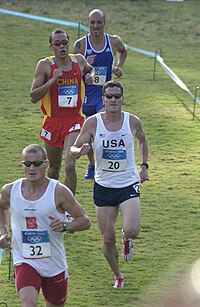
Photo from wikipedia
For the 2-D laser-based tasks, e.g., people detection and people tracking, leg detection is usually the first step. Thus, it carries great weight in determining the performance of people detection… Click to show full abstract
For the 2-D laser-based tasks, e.g., people detection and people tracking, leg detection is usually the first step. Thus, it carries great weight in determining the performance of people detection and people tracking. However, many leg detectors ignore the inevitable noise and the multiscale characteristics of the laser scan, which makes them sensitive to the unreliable features of point cloud and further degrades the performance of the leg detector. In this article, we propose a multiscale adaptive-switch random forest (MARF) to overcome these two challenges. First, the adaptive-switch decision tree is designed to use noise-sensitive features to conduct weighted classification and noise-invariant features to conduct binary classification, which makes our detector perform more robust to noise. Second, considering the multiscale property that the sparsity of the 2-D point cloud is proportional to the length of laser beams, we design a multiscale random forest structure to detect legs at different distances. Moreover, the proposed approach allows us to discover a sparser human leg from point clouds than others. Consequently, our method shows an improved performance compared to other state-of-the-art leg detectors on the challenging Moving Legs dataset and retains the entire pipeline at a speed of 60+ FPS on low-computational laptops. Moreover, we further apply the proposed MARF to the people detection and tracking system, achieving a considerable gain in all metrics.
Journal Title: IEEE transactions on cybernetics
Year Published: 2022
Link to full text (if available)
Share on Social Media: Sign Up to like & get
recommendations!